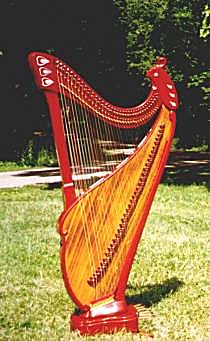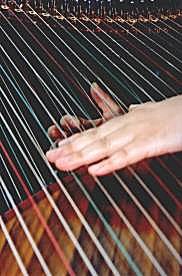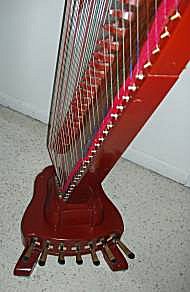D.2 Revival of the Kong Hou - Continued

Figure D-5
The modern Kong Hou, which Joy Yu Hoffman plays, was designed and built by Zhou Guang Yuen, professor at the Shenyang Conservatory of Music in China
This Kong Hou has a double row of strings. Each row has 36 strings, a total of 72 in all. Each string has a bridge which is set in the middle of the sound board. The strings on both sides cross the bridges and are tied to the back of the sound box.
The sound board is made of parasol or wu tong wood. The sound box is 1� inches to 3 � inches thick, shaped larger than a half size of the pipa, designed vertically.

Figure D-6
The strings are made of silk twisted over steel, under tension. While a player plays one side of a string and presses the string of the same pitch on the other side multiple ornamentations and vibratos are produced. Joy�s Kong Hou has seven single action pedals, the same as a Western pedal harp, but not double action.

Figure D-7